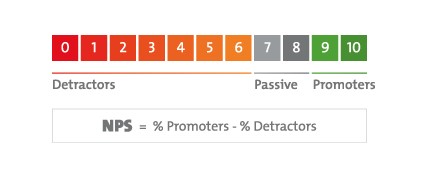4. Is it worth the effort?
Today’s consumer, regardless of age, has very high expectations about access to information, pricing, and the level of service they require. Part of this new level of expectation is the Customer Effort Score (CES), which measures the level of effort that a customer must expend to research, select, and purchase a given brand.
Similar to NPS above, the CES is based on how customers rate a simple question: “How much effort did you personally have to put forth to accomplish [this task]?” Customers answer on a scale of one to five, with one being extremely minimal effort and five being extremely difficult.
Adding a second question helps with context: “How did this effort compare to your expectations?” Expectations have a significant effect on their score. If the customer expects a transaction to take little effort and instead it takes a lot, your experience and outcome are at risk.
Currently, the CES is typically used to measure the value of customer service interactions, but is also expanding into a reflection of the actual purchase process. Customers take note not only of the ease of interaction, but also if it left them delighted or disappointed. As a result, some research suggests that CES may relate more closely to purchase and repurchase intent than other metrics.
5. How does your experience stack up?
We all want to be the best, or at least understand what “best” looks like so we can devise a plan to get there. That’s why benchmarks are important with any kind of business comparison.
One benchmark for CX that exists is the Forrester Customer Experience Index or CxPi. This annual survey evaluates the customer experience of more than 150 companies in the United States. To create a broader context, Forrester defines “customer experience” at three unique levels aligned to the Classic Needs Pyramid: basics, value creation, and surprising the customer. The index includes data compiled for various industries, and therefore is a great gauge to aspire to, especially for industries like building products that are well behind the CX curve.
Make it part of everyday business analysis
Building an amazing customer experience is not just about making your customers feel better, it’s also about optimizing your business results — outperforming your competitors and the industry. If you do it right, the impact to your business can be dramatic.
To make CX relevant in the business world, we must align the more emotional and experiential metrics with business metrics, so that we can answer one question: “How much more profit will we make if we raise our CX score by one point?”
To make CX part of your company’s day-to-day process, metrics and the dashboards they populate must be easy to access and analyze; embedded within the other tools (like your CRM) your team uses on an ongoing basis; and finally, linked to and correlated with your business performance.
Some key questions you should be able to answer for each customer profile include:
- Premium price: Are consumers willing to pay more for a better experience? What exact part of the experience is the key driver of that inclination to pay more, and how much more?
- Frequency: What customer profile buys at what frequency and why? Can we influence frequency inside specific aspects of the experience?
- Share of wallet/Unrealized Opportunity: Does a better experience drive the customer to spend more at a single interaction interval? What part of the experience drives a larger engagement? After defining the LVC, what is our average sales vs. the average interaction or annual sales vs. annual opportunity?
- Relationship duration: Do customers that enjoy a better experience have longer retention? How much longer will they continue to be our customers if we deliver a better experience?
- Referral: Do customers that have deeper experiences refer our company to other people at a higher rate?
We can all surmise that a better customer experience is better for our business than a poor one. But without the right metrics in place to understand what creates a great experience, you will never know how much to invest to positively impact your business.
Interrupt has helped numerous building products companies to drive a more dynamic and profitable customer experience process. To learn more about holding a CX JourneyPath™ Workshop or other customized CX support for your organization, email us at: contact@InterruptDelivers.com.

